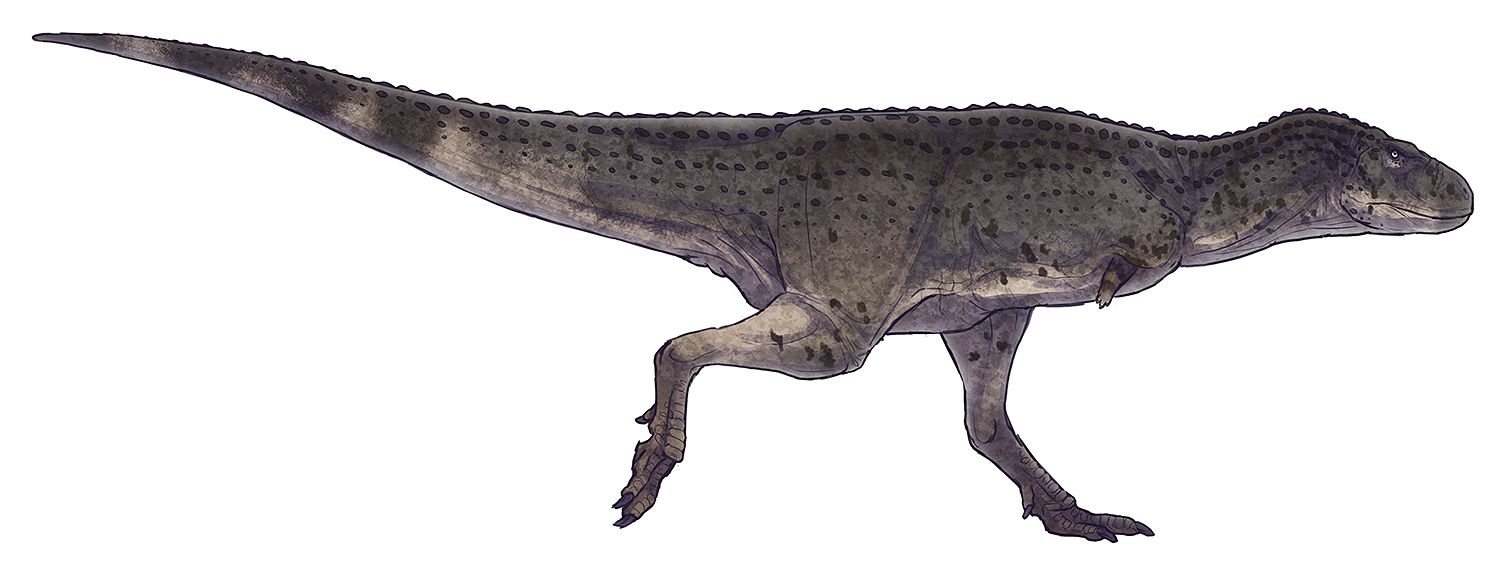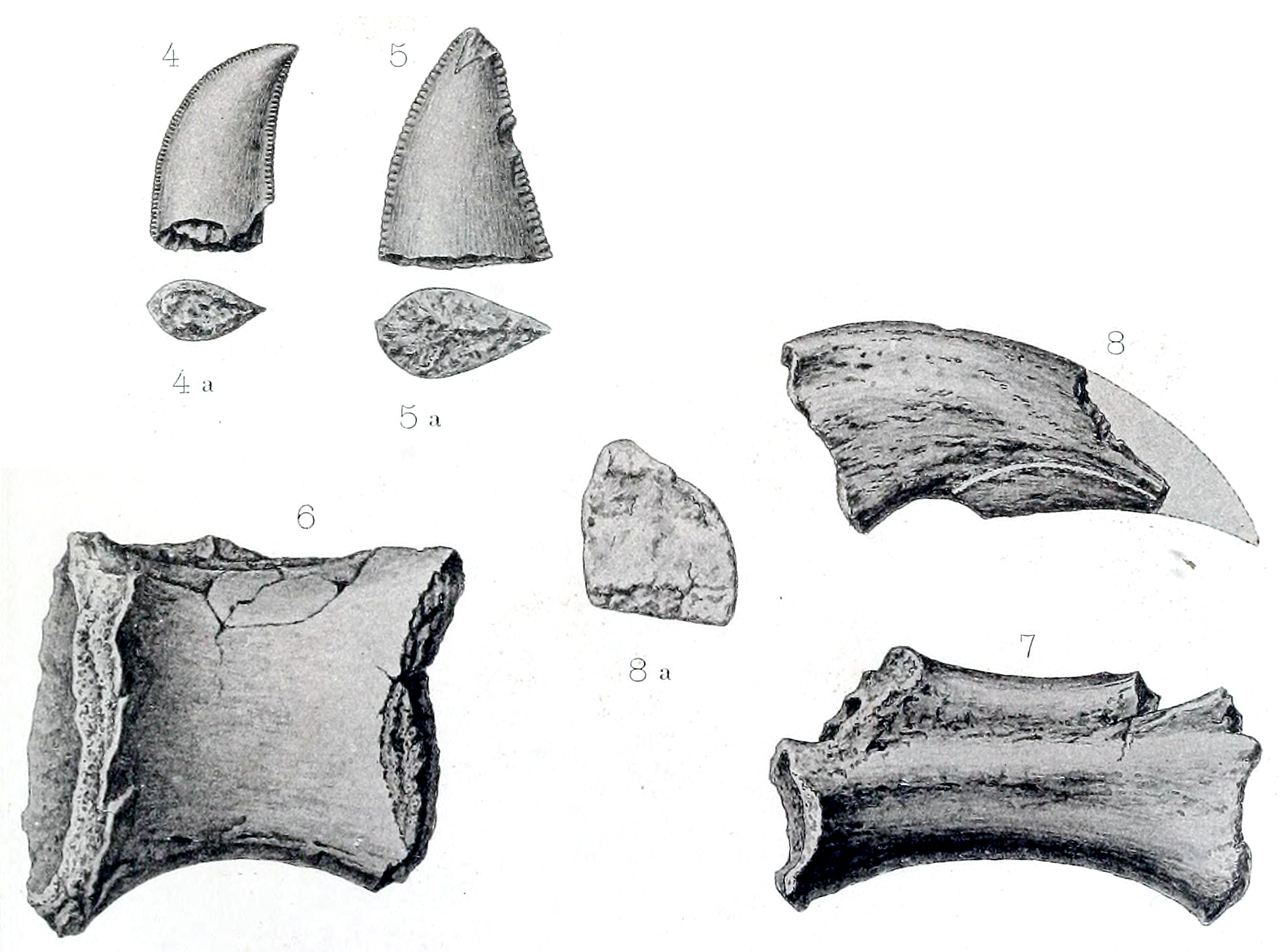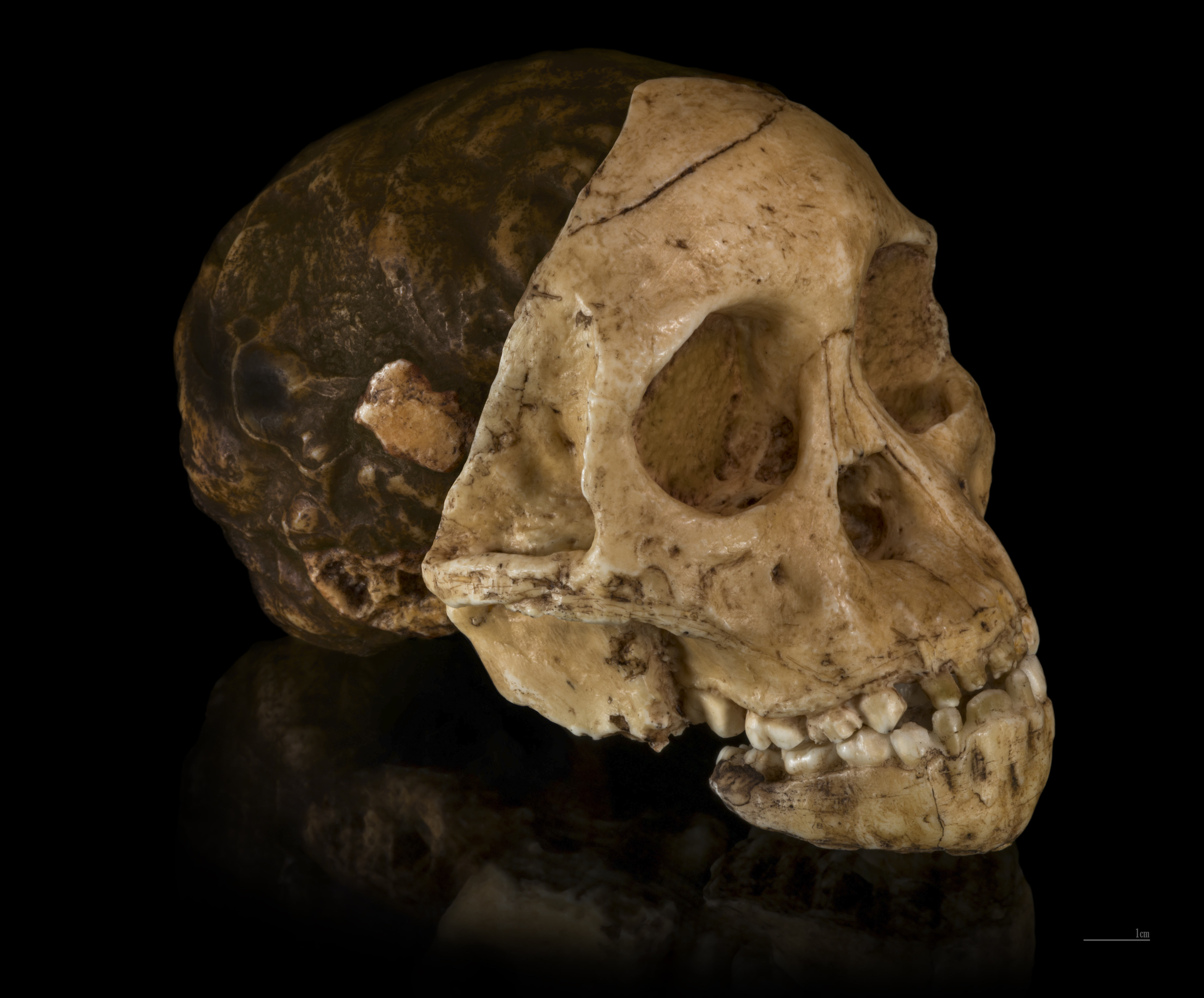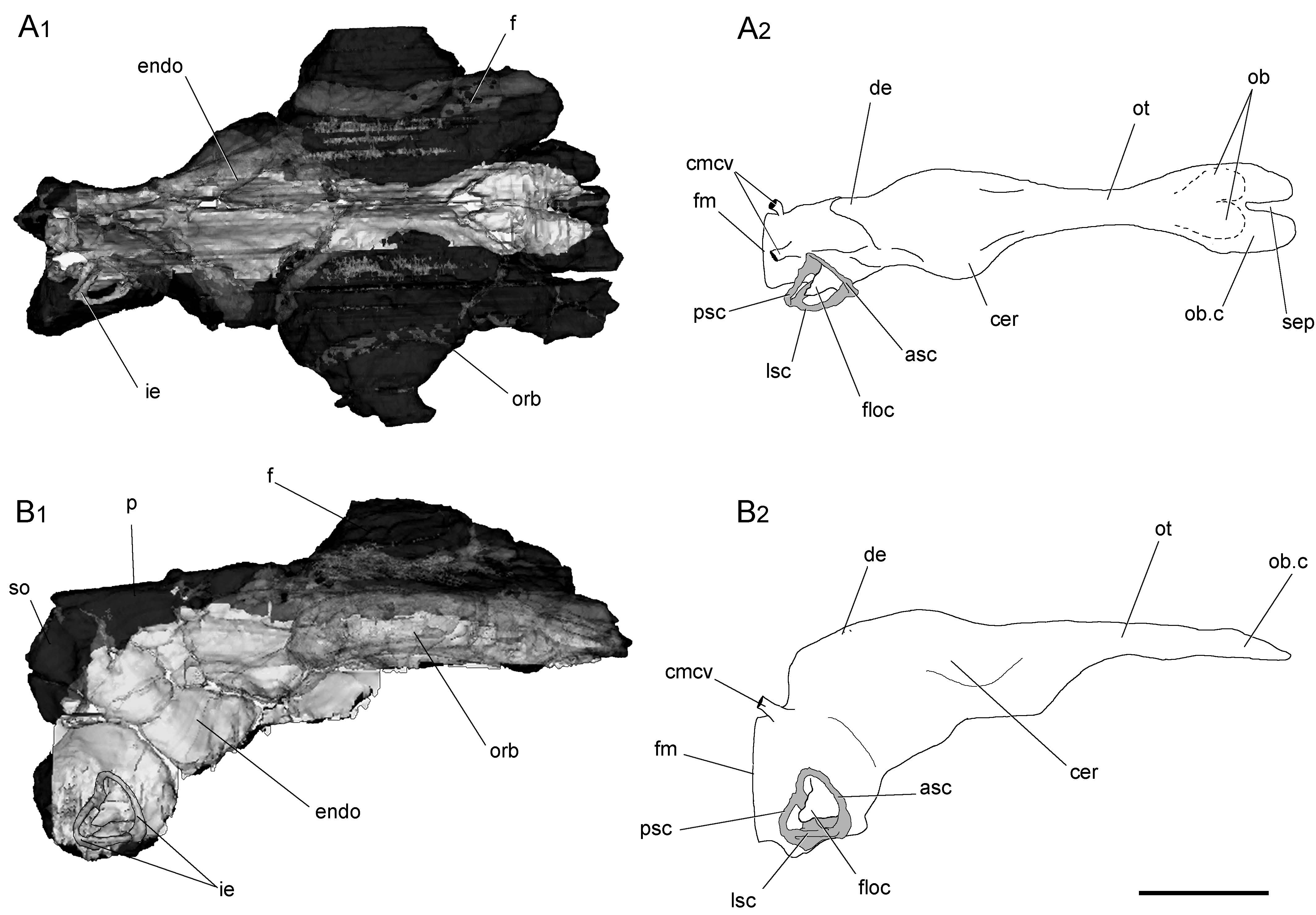|
Aucasaurus Garridoi
''Aucasaurus'' is a genus of medium-sized abelisaurid theropod dinosaur from Argentina that lived during the Late Cretaceous (Santonian to Campanian stage) of the Anacleto Formation. It was smaller than the related ''Carnotaurus'', although more derived in some ways, such as its extremely reduced arms and almost total lack of fingers. The type skeleton is complete to the thirteenth caudal vertebra, and so is relatively well understood, and is the most complete abelisaurid yet described. However, the skull is damaged, causing some paleontologists to speculate that it was involved in a fight prior to death. In 2009, Novas suggested that ''Aucasaurus garridoi'' might be a junior synonym of '' Abelisaurus comahuensis''. In 2010, Gregory S. Paul renamed ''Aucasaurus garridoi'' into ''Abelisaurus garridoi''. Despite their similarities, other researchers have placed both genera as separate taxa. Discovery ''Aucasaurus'' is known from finds in the Río Colorado Subgroup, a Late Cretace ... [...More Info...] [...Related Items...] OR: [Wikipedia] [Google] [Baidu] |
Santonian
The Santonian is an age in the geologic timescale or a chronostratigraphic stage. It is a subdivision of the Late Cretaceous Epoch or Upper Cretaceous Series. It spans the time between 86.3 ± 0.7 mya (million years ago) and 83.6 ± 0.7 mya. The Santonian is preceded by the Coniacian and is followed by the Campanian.Gradstein ''et al.'' (2004) Stratigraphic definition The Santonian Stage was established by French geologist Henri Coquand in 1857. It is named after the city of Saintes in the region of Saintonge, where the original type locality is located. The base of the Santonian Stage is defined by the appearance of the inoceramid bivalve ''Cladoceramus undulatoplicatus''. The GSSP (official reference profile) for the base of the Santonian Stage is located near Olazagutia, Spain; it was ratified by the Subcommission on Cretaceous Stratigraphy in 2012. The Santonian's top (the base of the Campanian Stage) is informally marked by the extinction of the crinoid '' Marsupites tes ... [...More Info...] [...Related Items...] OR: [Wikipedia] [Google] [Baidu] |
Río Colorado Subgroup
The Río Colorado Subgroup, formerly named as Río Colorado Formation, is a Late Cretaceous (Santonian to Early Campanian) geologic subgroup of the Neuquén Basin in northern Patagonia, Argentina. It belongs to the Neuquén Group and contains the Anacleto and Bajo de la Carpa Formations. The subgroup overlies the Río Neuquén Subgroup and is overlain by the Allen Formation of the Malargüe Group, separated by an unconformity dated to 79 Ma.Leanza et al., 2004, p.63 Dinosaur remains diagnostic to the genus level are among the fossils that have been recovered from the formation.Weishampel et al., 2004, pp. 603-604 Fossil content Ornithischians Sauropods Titanosaur eggs are known from Neuquén Province."63.6 Provincia de Neuquén, Argentina; 3. Río Colorado Formation," in Weishampel, et al. (2004). Page 603. Theropods See also * List of stratigraphic units with dinosaur body fossils * List of stratigraphic units with dinosaur trace fossils This is a list of s ... [...More Info...] [...Related Items...] OR: [Wikipedia] [Google] [Baidu] |
Flocculus (cerebellar)
The flocculus (Latin: ''tuft of wool'', diminutive) is a small lobe of the cerebellum at the posterior border of the middle cerebellar peduncle anterior to the biventer lobule. Like other parts of the cerebellum, the flocculus is involved in motor control. It is an essential part of the vestibulo-ocular reflex, and aids in the learning of basic motor skills in the brain. It is associated with the nodulus of the vermis; together, these two structures compose the vestibular part of the cerebellum. At its base, the flocculus receives input from the inner ear's vestibular system and regulates balance. Many floccular projections connect to the motor nuclei involved in control of eye movement. Structure The flocculus is contained within the flocculonodular lobe which is connected to the cerebellum. The cerebellum is the section of the brain that is essential for motor control. As a part of the cerebellum, the flocculus plays a part of the vestibulo-ocular reflex system, a system th ... [...More Info...] [...Related Items...] OR: [Wikipedia] [Google] [Baidu] |
Indosaurus
''Indosaurus'' () is a genus of carnivorous theropod dinosaur that lived in what is now India, about 69 to 66 million years ago during the Maastrichtian division of the Late Cretaceous. The species I. matleyi weighed roughly 700 kg (1540 lb). History The type species, ''Indosaurus matleyi'', was named by Huene and Matley in 1933 making Indosaurus the first Majungasaurine to be discovered.F. von Huene and C. A. Matley, 1933, "The Cretaceous Saurischia and Ornithischia of the Central Provinces of India", ''Palaeontologica Indica (New Series), Memoirs of the Geological Survey of India'' 21(1): 1-74 The generic name refers to India and the specific name honours Matley. This species now also includes ''Megalosaurus matleyi''; confusingly, the dubious tooth taxon ''Orthogoniosaurus'' shares the same specific name but is based on different material. Some paleontologists have speculated that ''Indosuchus'' and ''Compsosuchus'' should also be included within the genus ''Ind ... [...More Info...] [...Related Items...] OR: [Wikipedia] [Google] [Baidu] |
Majungasaurus
''Majungasaurus'' (; ) is a genus of abelisaurid theropod dinosaur that lived in Madagascar from 70 to 66 million years ago, at the end of the Cretaceous Period (geology), Period, making it one of the last known non-avian dinosaurs that went extinct during the Cretaceous–Paleogene extinction event. The genus contains a single species, ''Majungasaurus crenatissimus''. This dinosaur is also called ''Majungatholus'', a name which is considered a junior synonym of ''Majungasaurus''. Like other abelisaurids, ''Majungasaurus'' was a bipedal predator with a short snout. Although the forelimbs are not completely known, they were very short, while the hind limbs were longer and very stocky. It can be distinguished from other abelisaurids by its wider skull, the very rough texture and thickened bone on the top of its snout, and the single rounded horn on the roof of its skull, which was originally mistaken for the dome of a pachycephalosaur. It also had more teeth in both upper and lowe ... [...More Info...] [...Related Items...] OR: [Wikipedia] [Google] [Baidu] |
Endocast
An endocast is the internal cast of a hollow object, often referring to the cranial vault in the study of brain development in humans and other organisms. Endocasts can be artificially made for examining the properties of a hollow, inaccessible space, or they may occur naturally through fossilization. Cranial endocasts Artificial casts Endocasts of the inside of the neurocranium (braincase) are often made in paleoanthropology to study brain structures and hemispheric specialization in extinct human ancestors. While an endocast can not directly reveal brain structure, it can allow scientists to gauge the size of areas of the brain situated close to the surface, notably Wernicke's and Broca's areas, responsible for interpreting and producing speech. Traditionally, the casting material is some form of rubber or rubber-like material. The openings to the brain cavity, except for the '' foramen magnum'', are closed, and the liquid rubber is slushed around in the empty cranial vaul ... [...More Info...] [...Related Items...] OR: [Wikipedia] [Google] [Baidu] |
University Of Alberta
The University of Alberta, also known as U of A or UAlberta, is a public research university located in Edmonton, Alberta, Canada. It was founded in 1908 by Alexander Cameron Rutherford,"A Gentleman of Strathcona – Alexander Cameron Rutherford", Douglas R. Babcock, 1989, The University of Calgary Press, 2500 University Drive NW, Calgary, Alberta, Canada, the first premier of Alberta, and Henry Marshall Tory,"Henry Marshall Tory, A Biography", originally published 1954, current edition January 1992, E.A. Corbett, Toronto: Ryerson Press, the university's first president. It was enabled through the Post-secondary Learning Act''.'' The university is considered a "comprehensive academic and research university" (CARU), which means that it offers a range of academic and professional programs that generally lead to undergraduate and graduate level credentials. The university comprises four campuses in Edmonton, an Augustana Campus in Camrose, and a staff centre in downtown Cal ... [...More Info...] [...Related Items...] OR: [Wikipedia] [Google] [Baidu] |
Aucasaurus Braincase
''Aucasaurus'' is a genus of medium-sized Abelisauridae, abelisaurid theropod dinosaur from Argentina that lived during the Late Cretaceous (Santonian to Campanian faunal stage, stage) of the Anacleto Formation. It was smaller than the related ''Carnotaurus'', although more derived in some ways, such as its extremely reduced arms and almost total lack of fingers. The type skeleton is complete to the thirteenth caudal vertebra, and so is relatively well understood, and is the most complete abelisaurid yet described. However, the skull is damaged, causing some paleontologists to speculate that it was involved in a fight prior to death. In 2009, Novas suggested that ''Aucasaurus garridoi'' might be a junior synonym of ''Abelisaurus comahuensis''. In 2010, Gregory S. Paul renamed ''Aucasaurus garridoi'' into ''Abelisaurus garridoi''. Despite their similarities, other researchers have placed both genera as separate taxa. Discovery ''Aucasaurus'' is known from finds in the Río Color ... [...More Info...] [...Related Items...] OR: [Wikipedia] [Google] [Baidu] |
Metacarpals
In human anatomy, the metacarpal bones or metacarpus form the intermediate part of the skeleton, skeletal hand located between the phalanges of the fingers and the carpal bones of the wrist, which forms the connection to the forearm. The metacarpal bones are analogous to the metatarsal bones in the foot. Structure The metacarpals form a transverse arch to which the rigid row of distal carpal bones are fixed. The peripheral metacarpals (those of the thumb and little finger) form the sides of the cup of the palmar gutter and as they are brought together they deepen this concavity. The index metacarpal is the most firmly fixed, while the thumb metacarpal articulates with the trapezium and acts independently from the others. The middle metacarpals are tightly united to the carpus by intrinsic interlocking bone elements at their bases. The ring metacarpal is somewhat more mobile while the fifth metacarpal is semi-independent.Tubiana ''et al'' 1998, p 11 Each metacarpal bone consists o ... [...More Info...] [...Related Items...] OR: [Wikipedia] [Google] [Baidu] |
Hand
A hand is a prehensile, multi-fingered appendage located at the end of the forearm or forelimb of primates such as humans, chimpanzees, monkeys, and lemurs. A few other vertebrates such as the koala (which has two opposable thumbs on each "hand" and fingerprints extremely similar to human fingerprints) are often described as having "hands" instead of paws on their front limbs. The raccoon is usually described as having "hands" though opposable thumbs are lacking. Some evolutionary anatomists use the term ''hand'' to refer to the appendage of digits on the forelimb more generally—for example, in the context of whether the three digits of the bird hand involved the same homologous loss of two digits as in the dinosaur hand. The human hand usually has five digits: four fingers plus one thumb; these are often referred to collectively as five fingers, however, whereby the thumb is included as one of the fingers. It has 27 bones, not including the sesamoid bone, the number o ... [...More Info...] [...Related Items...] OR: [Wikipedia] [Google] [Baidu] |
Aucasaurus Garridoi Scale Diagram
''Aucasaurus'' is a genus of medium-sized abelisaurid theropod dinosaur from Argentina that lived during the Late Cretaceous (Santonian to Campanian stage) of the Anacleto Formation. It was smaller than the related ''Carnotaurus'', although more derived in some ways, such as its extremely reduced arms and almost total lack of fingers. The type skeleton is complete to the thirteenth caudal vertebra, and so is relatively well understood, and is the most complete abelisaurid yet described. However, the skull is damaged, causing some paleontologists to speculate that it was involved in a fight prior to death. In 2009, Novas suggested that ''Aucasaurus garridoi'' might be a junior synonym of '' Abelisaurus comahuensis''. In 2010, Gregory S. Paul renamed ''Aucasaurus garridoi'' into ''Abelisaurus garridoi''. Despite their similarities, other researchers have placed both genera as separate taxa. Discovery ''Aucasaurus'' is known from finds in the Río Colorado Subgroup, a Late Creta ... [...More Info...] [...Related Items...] OR: [Wikipedia] [Google] [Baidu] |
Aucasaurus Garridoi By Paleocolour
''Aucasaurus'' is a genus of medium-sized abelisaurid theropod dinosaur from Argentina that lived during the Late Cretaceous (Santonian to Campanian stage) of the Anacleto Formation. It was smaller than the related ''Carnotaurus'', although more derived in some ways, such as its extremely reduced arms and almost total lack of fingers. The type skeleton is complete to the thirteenth caudal vertebra, and so is relatively well understood, and is the most complete abelisaurid yet described. However, the skull is damaged, causing some paleontologists to speculate that it was involved in a fight prior to death. In 2009, Novas suggested that ''Aucasaurus garridoi'' might be a junior synonym of '' Abelisaurus comahuensis''. In 2010, Gregory S. Paul renamed ''Aucasaurus garridoi'' into ''Abelisaurus garridoi''. Despite their similarities, other researchers have placed both genera as separate taxa. Discovery ''Aucasaurus'' is known from finds in the Río Colorado Subgroup, a Late Creta ... [...More Info...] [...Related Items...] OR: [Wikipedia] [Google] [Baidu] |






_dorsal_view.png)

.jpg)